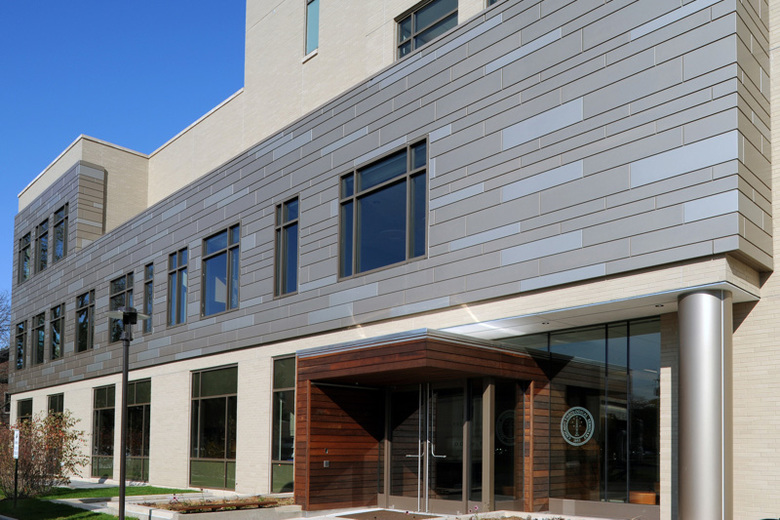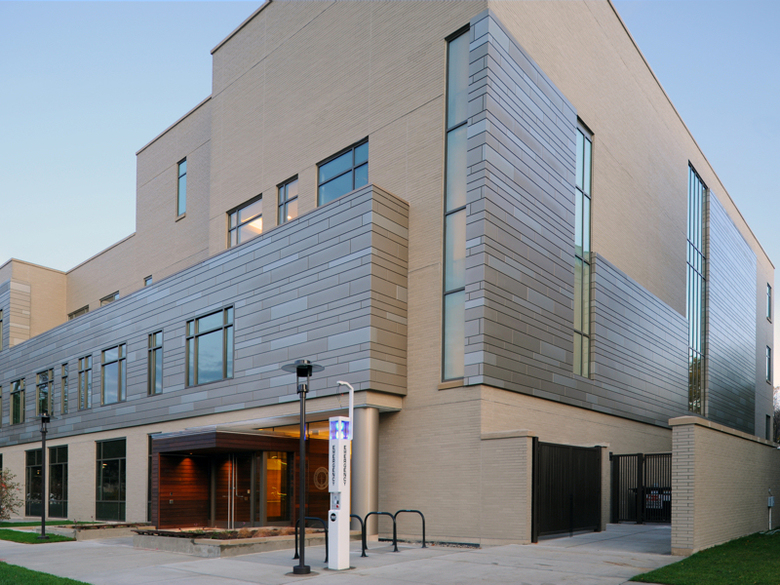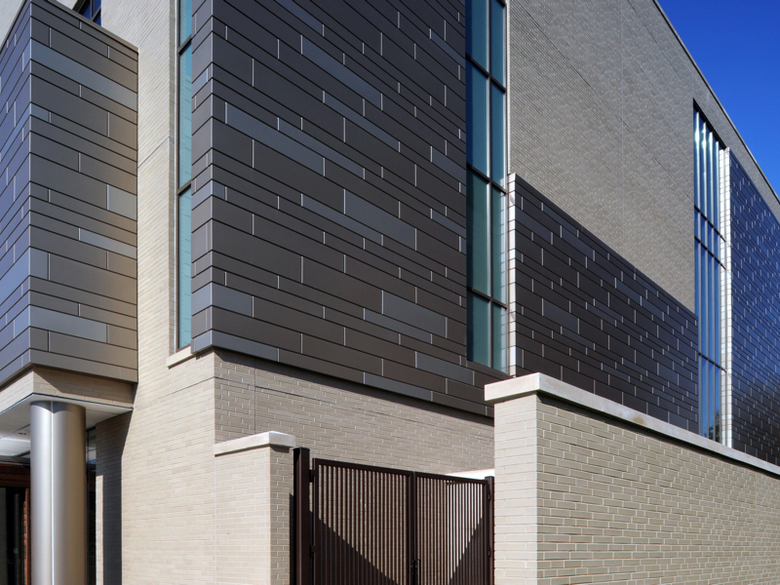Dri-Design in Chicago
John Hill
29. June 2014
Photo: Courtesy of Dri-Design
Our visit to the 2014 AIA National Convention included many hours walking the Expo floor to find great products used in great projects. One local building is Nagle Hartray Architecture's Chicago Theological Seminary wrapped in Dri-Design panels.
Photo: Courtesy of Dri-Design
Founded in 1855 "in the boomtown of Chicago" to train church leaders on "America's western frontier," CTS is today considered a leader in progressive theology that is committed to creating what it calls "leaders for the next." In 2012 CTS moved into its new building overlooking the Midway Plaisance on the University of Chicago campus. Given this prominent location the building is covered predominantly in a buff-colored brick that resembles limestone to blend in with the larger Neo-Gothic campus.
Photo: Courtesy of Dri-Design
In an effort to imbue the building with asymmetry and a certain informal character, the architects at Nagle Hartray wrapped part of the exterior with metal panels. Specifically, Dri-Design panels in two colors – Harvest Gold and Cashmere Pearl – were applied on primarily the south and west façades and a drum-shaped volume on the roof totaling 11,000 square feet (1,022sm). This sense of layering is strong, due to the complementary colors of the metal and the brick, and to the way the metal panels project in front of the masonry surfaces.
Photo: Courtesy of Dri-Design
Scott Cryer, project architect on CTS, reinforces this importance of asymmetry: "You will find many aspects of the building to be defined by asymmetry complemented with balance. We found that asymmetrical massing provided an interesting contrast not only to typical religious iconographic architecture but also to large portions of the architecture found on the neighboring campus." Other contemporary buildings on the University of Chicago campus, most notably Tod Williams Billie Tsien Architects' Reva and David Logan Center for the Arts (also overlooking the Midway), embrace asymmetry through massing and materiality.
Dri-Design booth at the Expo. Photo: John Hill/World-Architects
The building's asymmetry is further reinforced by the staggered bond pattern of Dri-Design's painted aluminum panels. Three different heights combine with the two colors to give the interlocking panels the random appearance of old stone walls, fitting for the building's campus setting. We saw a similar painted aluminum wall up close in Dri-Design's booth at the convention, with the added benefit of seeing how the Shadow Series can extend pieces up to 4" (102mm), or more than 2-1/2" (64mm) beyond the faces of the standard 1-1/4" (32mm) panels used at CTS.





